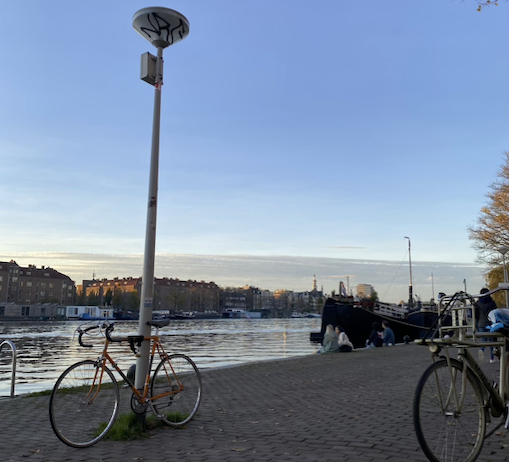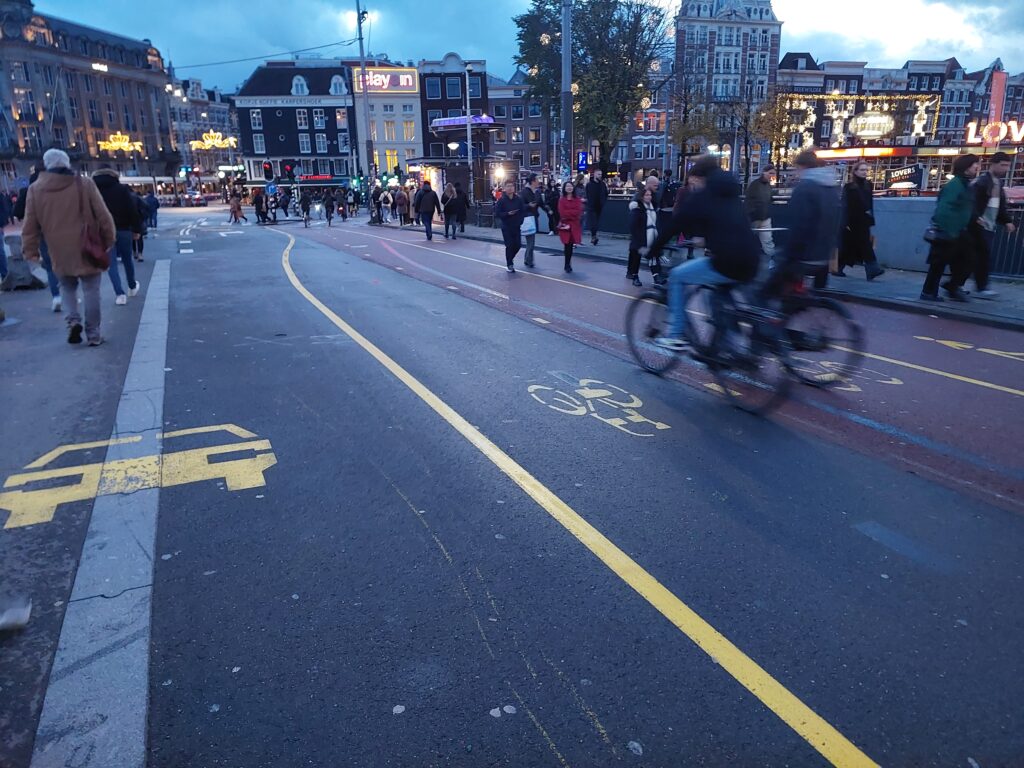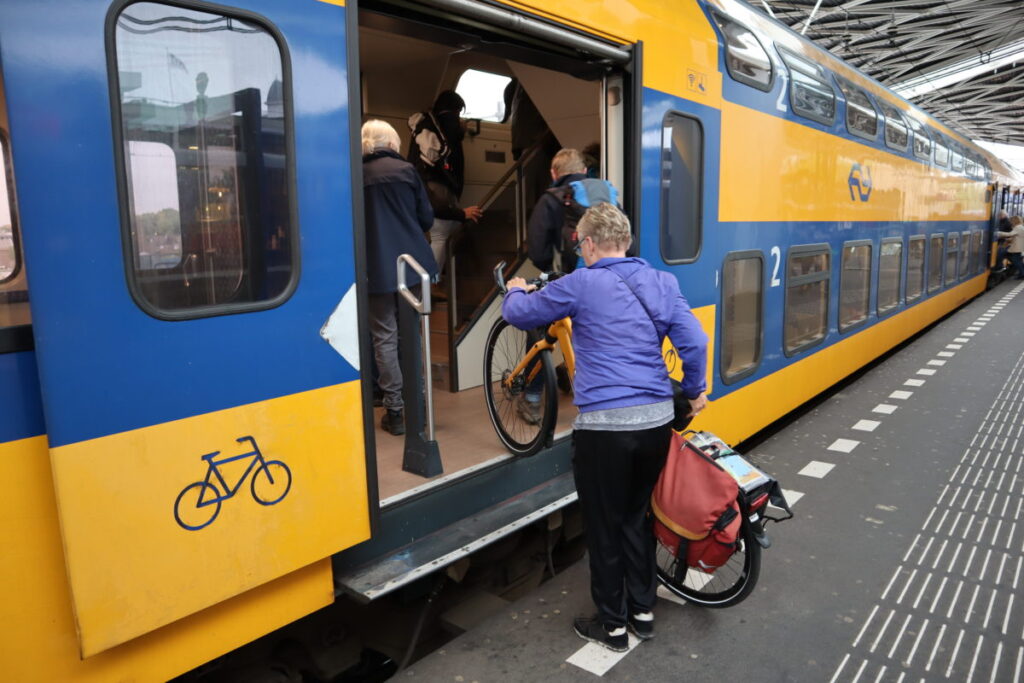Colleen Donovan-Togo | LinkedIn
Selected final essay, published 3 July 2020
Colleen has an M.A. in Human Rights and Ethics. She is an active travel enthusiast and community organiser based in Greater Manchester, United Kingdom.
Unraveling the Cycling City MOOC on Coursera
Like many fellow students, my interest in this course stems from being a cyclist and wishing to have cycling in my city grow in safety and social acceptability. I live in Greater Manchester, in the United Kingdom (UK), the third largest conurbation after London. Manchester has an emerging culture of cycling, particularly among students – 13% of residents reported cycling at least once per week in 2019 (Bike Life, 2019), just slightly lower than the national average of 14% (National Travel Survey, 2018). But utility cycling in Manchester feels like a rebellious act, you must be brave, or just crazy, because the infrastructure is motorised vehicle centric. Manchester also lacks joined up cycling and public transportation options; bikes are not permitted on the tram network and buses have no carrying capacity (e.g. a front rack).
I began this course with the naïve belief that there is a magic formula (or magic spell even!) to convince folks to cycle, especially those who choose to drive for short journeys. Approximately 200 million trips per year are one kilometre or less in Greater Manchester alone (Sustrans, 2019). At the very least, maybe other places have found the key to having other road users be more aware of, and show greater respect for cyclists on the road and at junctions?

The real lesson here for all those cities across the world trying to develop a similar bicycle culture is change requires two elements: a dedicated public outcry and forward-thinking policy
Brailsford, 2015, Timestamp 2.40
For me, this is the key takeaway from this course, the fundamental part of growing a grassroots cycling culture. I think discussions about the ‘soft’ aesthetics of cycle highway design (Liu et al, 2019) are important, but much like Maslow’s Hierarchy of Needs (1943), it may represent the highest critical outcome, the self-actualisation if you will, of cycling infrastructure. In Manchester, we are further down the pyramid and need to focus on the cornerstone of safety. Seventy-eight percent of Greater Manchester’s residents said cycling safety needs to be improved and 49% reported that concerns about safety were the main barrier preventing them from choosing to cycle (Sustrans, 2019).
What we are lacking is the public outcry. In 2016, 59% of UK Travel Survey respondents felt it was too dangerous to cycle on the roads (Sustrans, 2018). How can you blame them? This same report cites that 2,564 adult pedestrians and 2,668 pedal cyclists were killed or seriously injured and 61% of children killed on the road were pedestrians or cyclists (ibid). As Pucher and Buehler (2018, p.505) note in Making Cycling Irresistible, “perhaps the most important reason for the higher levels of cycling in the Netherlands, Denmark and Germany—especially among women, children and the elderly—is that cycling is much safer there than in the USA and the UK“.

But in this course, we learned this wasn’t always the case in the Netherlands. In 1971, there were 3,300 road casualties—400 of whom were children (van der Zee, 2015). The difference is the public response—Dutch residents had had enough. The Stop de Kindermoord campaign had massive public support and strongly influenced the direction of transport design, resulting in improved junctions, segregated cycle lanes, and other traffic calming measures (van der Zee, 2015; Brailsford, 2015).
There are high profile protests in the UK organised by organisations like Stop Killing Cyclists and Extinction Rebellion. For example, the well-attended ‘die in’ staged in London last year (Busby, 2019) and the regular ‘Critical mass’ group rides organised by local campaigners in various cities and towns. However, there still seems to be an entrenched divide between the ‘cyclists’ that campaign for improved safety and the seemingly indifferent populace. Indeed, budgetary spending has increased on cycling improvement schemes and active travel has become a buzz word for local council health teams. But it seems very telling of the true state of cycling in the UK that the government 2018 Travel Survey infographic does not disaggregate cycling as an option from ‘other’, whereas walking, private cars, and public transportation all have their own classification (National Travel Survey, 2018).
For future research, I wonder if there is something about the national ‘habitus’ that we could examine. The Anglophone countries (United States, UK, Australia, Canada) have a persistent inverse relationship, with a low cycling mode share yet high cyclist mortality. Possibly this comes from a lack of political will. Consider the observations of Pucher and Buehler (2008, p.1), “It is the coordinated implementation of this multifaceted, mutually reinforcing set of policies that best explains the success of these three countries [the Netherlands, Denmark, and Germany] in promoting cycling”. These policies include increasing the user costs to drivers, intelligent land-use schemes, improved safety, and well-integrated travel systems.
But there must be a groundswell of support for such policies to be brought before lawmakers in the first place, and then to be accepted by the public once instituted. How did the Stop de Kindermoord protest become so prolific? How can we create that critical mass of residents in our UK cities to feel that reclaiming the roads for local residents is not a mere inconvenience but can be lifesaving? Once people experience the reality of traveling outside their protected metal boxes, they may appreciate the need for change. But how do we convince people to take that first step or pedal? How can we shift the mindset to understanding that the finite space of cities is not best served by consigning more space to motorised traffic?
I finish this course concluding (sadly) that there are no ‘magic’ solutions and that people will choose travel options that are safe, efficient, and inexpensive for their lives. To make cycling the irresistible option in Manchester, we must continue to put pressure on elected officials to invest in strategies that are brave and forward-thinking, and help ‘ordinary’ people feel comfortable biking around town.
Resources:
- Brailsford, L. (2015, 8 April). Why the Dutch ride bikes [Video]. YouTube. https://www.youtube.com/watch?v=Wos9Ou6dTDk&vl=en
- Busby, M. (2019). Hundreds of cyclist’s stage ‘die-in’ protest in central London. The Guardian https://www.theguardian.com/world/2019/sep/07/hundreds-of-cyclists-stage-die-in-protest-in-central-london
- Liu, G., te Brömmelstroet, M., Krishnamurthy, S., & van Wesemael, P. (2019). Practitioners’ perspective on user experience and design of cycle highways. Transportation Research Interdisciplinary Perspectives, 1, 100010. https://doi.org/10.1016/j.trip.2019.100010
- Maslow, A.H. (1943). A theory of human motivation. Psychological Review, 50(4), 370–396. https://doi.org/10.1037/h0054346
- National Travel Survey (2018). Factsheet – England 2018. https://assets.publishing.service.gov.uk/government/uploads/system/uploads/attachment_data/file/822089/nts-2018-factsheets.pdf
- Pucher, J., & Buehler, R. (2008). Making cycling irresistible: Lessons from the Netherlands, Denmark and Germany. Transport Reviews, 28(4), 495–528. https://doi.org/10.1080/01441640701806612
- Sustrans blog, (2018, 23 January). Key walking and cycling statistics for the UK. https://www.sustrans.org.uk/our-blog/research/all-themes/all/key-walking-and-cycling-statistics-for-the-uk/
- Sustrans, (2019). Bike Life https://www.sustrans.org.uk/media/5950/bikelife19_greater-manchester_web.pdf
- Van der Zee, R. (2015) ‘How Amsterdam became the bike capital of the world’, The Guardian https://www.theguardian.com/cities/2015/may/05/amsterdam-bicycle-capital-world-transport-cycling-kindermoord



